When Riley first proposed the idea of a Best and Worst Trades in Canucks history to his co-host Bill thought one list would be clearly longer than the latter.
But, unlike our list of Leafs trades, the Canucks actually do better by our metric. (See the bottom of this page for the methodology.) The Canucks are a net plus in Point Shares for all trades in franchise history through the 2020 pandemic, and not just by a little bit: they are plus 717.5 total Point Shares across just over 300 transactions. That’s a pretty good +2 ish Point Shares per trade.
Here are the best of those trades. See our list of the Top 25 Best Trades in Toronto Maple Leafs History for a little bit more of an explanation as to the ranking. And don’t forget to check out our list of the Worst Canucks Trades of All Time.
Stats are as of the pandemic closure.
21. Reinhart for a pick – 21 PS
Canucks get:
- Steve Bozek – 5.8 PS (46G, 44A for 90P, -8 in 191 GP)
- Paul Reinhart – 15.2 PS (24G, 90A for 114P, -2 in 131 GP)
Flames get: 1989 3rd Round Pick – 0 PS (0 GP)
On September 6, 1988 the Calgary Flames traded All Star defenseman, Paul Reinhart, with another player (!!!) to the Canucks for a solitary third round pick in the coming draft. What the hell happened?
Since 1979, Reinhart had been one of the top offensive D in the NHL – he was 9th in scoring among D between the 1979-80 and 1986-87 seasons, despite playing in the fewest games of all the players in the Top 10.
It’s the games that were the problem – despite scoring a lot, making a few All Star teams and representing Canada internationally – the Flames were worried about Reinhart’s ability to keep playing because of a chronic back problem.
Just as importantly Al Macinnis is 3 years younger than Reinhart and Gary Suter is 4 years younger. The season before the trade, Suter scored 91 points and MacInnis 83. Reinhart played in 14 games and scored 4 points.
Presumably, word was out on Reinhart’s back. So the Flames had to add a player to the deal to get Vancouver to take him.
Bozek was a depth player who achieved good-lucking career highs of 21 goals and 43 points in 1985-86 until one realizes this was 1986, the year Gretzky scored 215 points.
He was included in the disastrous Brett Hull trade but, funnily enough, came back to Calgary in the Doug Gilmour trade, made earlier on September 6. So he was an easy throw-in.
Bozeck had a decent three years as a role player for the Canucks before he left in free agency in 1991.
Reinhart had two decent years in Vancouver before he retired, coming in 3rd in team points in 1988-89 and leading the team in points in 1989-90. (The Canucks were, um, not very good. Linden was very young and Bure wouldn’t play a game until after Reinhart retired.)
But this trade doesn’t make the list if the Flames get anything for that pick. It was a 3rd rounder and it usually doesn’t result in a good player. It didn’t.
20. Ehrhoff and Lukowich for some guys – 21. 4 PS
Canucks get:
- Christian Ehrhoff – 20.6 PS (28G, 66A for 94P, +55 in 159 GP)
- Brad Lukowich – 0.8 PS (1G, 1A for 2 P, +5 in 13 GP)
Sharks get:
- Daniel Rahimi – 0 PS (0 GP)
- Patrick White – 0 PS (0 GP)
On August 28, 2009 the Canucks traded two prospects for Top 4 D Christian Ehrhoff and an ageing Brad Lukowich.
Ehrhoff was only 27 and had five mostly strong seasons for the Sharks under his belt. Lukowich was a journeyman D with over 600 games experience who had played Top 4 minutes for the Devils in 2006-07.
Rahimi was a Swedish defensive D drafted in 2006 in the 3rd Round and who was playing in the AHL at the time of the trade. White was the real jewel of the trade, drafted 25th overall in 2007, a two-way centre playing in US College.
But prospects are prospects and sometimes they don’t work out. Neither player has ever played an NHL game. White last played in France in 2017. Rahimi is still playing in Sweden.
Lukowich only played the odd game for the Canucks and spent most of the year in the minors. He left in free agency the next summer.
Ehrhoff was literally the best defenceman on the Canucks for the next two (regular) seasons, leading Canucks skaters in ice time and leading all Canucks D in scoring over those two regular seasons.
However, Ehrhoff struggled in the Canucks’ run to the Final in 2011, seeing his role reduced and finishing with a team worst -13 (though he played hurt).
When he and the Canucks couldn’t come to a new contract, Ehrhoff was traded to the Islanders before his contract expired. He didn’t sign with the Islanders and instead infamously signed one of the era’s worst contracts with the Sabres, which they bought out three years later.
19. Boldirev and Rota for Lever – 22.2 PS
Canucks get:
- Ivan Boldirev – 12.2 PS (80G, 104A for 184P, -41 in 216 GP)
- Darcy Rota – 18 PS (120G, 116A for 236P, +6 in 289 GP)
Flames get:
- Don Lever – 8.3 PS (44G, 58A for 106P, +11 in 113 GP)
- Brad Smith – (0.3) PS (7G, 4A for 11P, -7 in 49 GP)
On February 8, 1980, the Canucks traded Don Lever and Brad Smith to Atlanta for Ivan Boldirev and Darcy Rota.
Lever was 27 and had been a consistent scorer for a bad Canucks team, leading the Canucks in scoring by over 100 points since he joined the team in 1972. Smith was only 21; though he was struggling to score in the NHL, he was also drafted in the 4th round in 1978.
Boldirev, at 30, was already a journeyman – Atlanta was his 4th franchise. But he had achieved a career high in points the season prior to this trade, with 80. Rota, at nearly 27, was a consistent 20-goal scorer for the Blackhawks before he was shipped to Atlanta with Boldirev in the Tom Lysiak trade.
Lever was great for the Flames – scoring at a higher rate for them than the Cancuks – but it doesn’t help this trade because the Flames traded him to the Rockies a year and a half later.
Smith was briefly a depth player and the Flames traded him for a bag of pucks to Detroit a year after this trade.
Boldirev was productive for the Canucks but they win this trade by such a wide margin more because of how long he stayed on the team, rather than for him outplaying Lever. He was traded to the Red Wings in January 1983.
Rota would spend the rest of his career with the Canucks, experiencing a career year in 1982-83 with 42 goals and 88 points. His career was cut short by injury.
18. Babych for Kurvers – 22.4 PS
Canucks get: Dave Babych – 22.4 PS (23G, 131A for 154P, -27 in 409 GP)
North Stars get: Tom Kurvers – 0 PS (0 GP)
On June 22, 1991 the Canucks traded Tom Kurvers for Dave Babych.
Kurvers was a soon-to-be 29-year-old Top 4 D whom the Canucks had recently acquired from the Leafs (for Brian Bradley) after the Leafs had disastrously traded for him and given up on him 89 games in. (Nobody knew how truly bad that Leafs-Devils trade was at the time Vancouver acquired Kurvers, though.)
Babych was a year and a half older than Kurvers with way more points in way more games. Babych was on the North Stars because Hartford left him unprotected in the expansion draft. So Minnesota likely regarded him as free money.
Without ice-time information it’s impossible for us to say who was playing a bigger role on their respective teams without watching lots of film.
Babych ended up playing until he was 37 and he played most of the rest of his career on the Canucks. (He played more games for the Canucks than any other team he played for.) He helped Vancouver get to the Cup Final in 1994.
Minnesota traded Kurvers later in the day for Craig Ludwig. So if we followed through on the connections, this trade would be a wash. But since we are going by total Point Shares for the teams directly involved in the trade, Minnesota loses.
17. Tanti for Fraser – 24.6 PS
Canucks get: Tony Tanti – 38.6 PS (250G, 220A for 470P, -57 in 531 GP)
Blackhawks get: Curt Fraser – 14 PS (94G, 120A for 204P, +21 in 303 GP)
On January 6, 1983 the Canucks traded soon-to-be 25-year-old LW Curt Fraser for 19-year-old RW Tony Tanti.
Fraser seemed to be an up-and-coming player, having already scored over 200 points in the NHL, with a career high of 67 points the previous season (he finished 4th on the Canucks in scoring).
Tanti was a young prospect who had struggled in 3 games with the Blackhawks.
So you can see the argument: even though Tanti was way younger than Fraser, the Blackhawks knew Fraser was already an NHL player. Maybe Tanti never becomes one.
But Fraser only ever once eclipsed his career high for the Canucks, scoring a new career high of 68 points in 1986. (Again, that’s the year Gretzky scored 215.) He had three 25-goal seasons in a row, which is impressive until you remember it’s the mid ’80s. He was a middle-six player for the Hawks until he was traded to the Stars in 1988.
Meanwhile, Tanti never scored less than 39 goals a season from 1984-85 until 1987-88. From this trade until Vancouver traded Tanti to the Penguins in 1990, Tanti led the Canucks in Goals (by more than 80) and Points.
16. 3 Players for Craig Janney – <25.9? PS
Canucks get:
- Jeff Brown – 7.8 PS (10G, 44A for 54P, +6 in 72 GP)
- Bret Hedican – 18.3 PS (17G, 85A for 102P, +13 in 310 GP)
- Nathan Lafayette – 0.5 PS (5G, 5A for 10P,+4 in 38 GP)
Blues get: Craig Janney – 0.7+ PS? 2G, 18A for 20P, +3? in 18 GP)
This is a weird one: On March 21, 1994 the Canucks traded Craig Janney to the Blues for Jeff Brown, Bret Hedican and Nathan Lafayette. The weird part of it is that the Canucks had just acquired Janney from the Blues on March 14 and Janney had never played a game. What the hell happened?
Well, on March 14 the Blues signed restricted free agent Petr Nedved, 22, who had been sitting out the 1993-94 season due to a contract dispute with Vancouver. The arbitrator awarded Janney to the Canucks as compensation but neither franchise was apparently happy with the result.
So the teams agreed to a trade: the Blues would get their #1 centre back and the Canucks would get new compensation for Nedved in the form of defenceman Brown, defensive prospect Hedican and forward prospect Lafayette.
Brown wasn’t in Vancouver all that long but he led all Canucks D in scoring in their run to the Final this season. The Canucks traded him to the Whalers in December 1995 in a trade that didn’t really work out.
Hedican stuck around for a while longer, in addition to going to that same Cup final. Over the next five years Hedican was the 5th most valuable skater on the Canucks and second most valuable D. He was traded to the Hurricanes in 2002 where he would find himself in another Cup final and, in 2006, he would find himself on the Cup.
Lafayate was mostly a minor leaguer for the Canucks and they traded him to the Rangers a year later.
Janney tallied 13 assists (but no goals) in 10 games when he returned to the Blues. We haven’t been able to figure out how many point shares that is, which is why we have question marks in this trade.
But Janney was injury prone his whole career, and after making it into only 8 games for the Blues, they traded him a year after this deal to the Sharks.
Would this be more fair to St. Louis if we added Nedved’s 1.8 PS (6G, 14A for 20P, +2 in 19 GP) to their total?
Maybe. But it would still be decisive a win for the Canucks.
15. McCarthy for Ververgaert – 27.1 PS
Canucks get:
- Drew Callandar – (0.2) PS (3G, 1A for 4P, -11 in 21 GP)
- Kevin McCarthy – 29.9 PS (51G, 148A for 199P, -13 in 352 GP)
Flyers get: Dennis Ververgaert – 2.6 PS (23G, 24A for 47P, +5 in 95 GP)
On December 29, 1978 the Canucks traded star winger Dennis Ververgaert, 25, for Flyers defensive prospect Kevin McCarthy and forward prospect Drew Callandar.
After Don Lever (see above), Ververgaert was the offensive star of the Canucks. He had the second most points on the team since he entered the league in 1973 and he had scored at least 19 goals and 45 points every season he’d been in the league. He led the Canucks in scoring in 1975-76.
McCarthy was drafted 17th overall in 1977, had a breakout rookie year but was struggling offensively in his sophomore year. Callandar was drafted 35 overall the year before and had managed only 4 points in 18 NHL games but was starring in the AHL at the time of the trade.
Callander never amounted to much. Vancouver tried playing him a little but he soon found his way back to the minors where he excelled through 1982. For the 1983-84 season he went to Germany.
McCarthy was hardly a star for the Canucks but he scored more points than any other Vancouver defenseman until the day he was traded away. He even received minor Norris consideration in 1980-81 (likely a Vancouver beat writer).
The real reason that this trade is a win for the Canucks is Ververgaert. His per game numbers had already slipped for the Canucks and then the Flyers played him as a depth forward. When the went to the Finals in 1908, Ververgaert played two playoff games.
Did Vancouver make the right call at the right time, or did they just luck out? Either way, they won.
14. Boudrias for Picks – 28.7 PS
Canucks get: Andre Boudrias – 28.7 PS (121G, 267A for 388P, -42 in 458 GP)
Blues get:
- 1970 7th Round Pick – 0 PS
- 1970 9th Round Pick – 0 PS
- Cash – ???
On June 10, 1970 the Canucks traded late round picks and cash to the the Blues for centre Andre Boudrias.
Boudrias was a journeyman at 26; having failed to make the Habs consistently he was an offensive force no the expansion North Stars but then failed to find a role on the Hawks where he was waived, eventually also failing to find a role on the Blues. The only hint of his future production was his one year on a bad team.
Given how the Blues acquired him, the price Canucks could have seemed actually seemed high.
Of course Boudrias turned into the Canucks’ first ever star, leading the Canucks in scoring all but one of their first five seasons, and almost leading the team the one year he actually didn’t.
It’s fair to wonder if Boudrias would have ever scored this much on an established team like the Blues or Hawks, had he ever been given the chance, but that’s not what happened.
Boudrias departed for the WHA for the 1976-77 season, ostensibly to play closer to home.
Meanwhile the Blues didn’t get a single NHL game out of the return, though they did get an undisclosed amount of money.
13. Cloutier for Aucoin – 28.8 PS
Canucks get: Dan Cloutier – 30.2 PS (109-68-24, .906 SV%, 2.42 GAA 14 SO)
Lightning get:
- Adrian Aucoin – 1.4 PS (1G, 11A for 12P, -8 in 26 GP)
- 2001 2nd Round Pick – 0 PS
On February 7, 2001 Vancouver traded Adrian Aucoin and a pick for the Lightning’s backup goaltender. It may seem weird to include the 2000 Canucks’ perpetual weakness as a trade win, but it is.
Aucoin was a 27-year-old Top 4 D who had recently scored 23 goals in a season.
Cloutier had one bad season as a starter under his belt and had lost his job to Kevin Weekes this season.
Why did the Canucks have to include the pick? Aucoin’s goal-scoring had fallen and his minutes had dramatically fallen this season.
Though Cloutier was never good enough to win the in playoffs – his playoff save percentage is .872 – he was the Canucks’ starting goaltender for three plus seasons and was actually decent in one of the those regular seasons.
More importantly for the trade, Aucoin did not impress in Tampa playing Top 2 minutes and they traded him that summer for Mathieu Biron.
And the pick never resulted in an NHL player.
It has to be viewed as a win, even if Vancouver should have figured out Cloutier wasn’t their starter sooner. (Cloutier was traded to LA for picks in the summer of 2006.)
12*. Morrison for Mogilny – 29.5 PS
Canucks get:
- Brendan Morrison – 39.3 PS (136G, 257A for 393P, +45 in 543 GP)
- Denis Pederson – 1.2 PS (8G, 15A for 23P, -1 in 102 GP)
Devils get: Alexander Mogilny – 13.5 PS (46G, 43A for 89P, +6 in 89 GP)
On March 14, 2000 the Canucks traded star winger Alex Mogilny to the New Jersey Devils for 24-year-old centres Brendan Morrison and Denis Pederson.
Mogilny had scored 55 goals and 100 points for Vancouver in 1995-96 but had struggled to stay healthy and maintain that production in the ensuing years. His countryman Pavel Bure had been traded the year prior after a trade request and Vancouver was ready to move on from the 31-year-old Mogilny to rebuild around the younger Markus Naslund.
Morrison (39th in 1993) had put up decent numbers in limited minutes over parts of 2+ seasons in New Jersey. Pederson, the higher pedigree prospect (13th overall in the same draft), had performed less well than Morrison in twice as many games but was still of an age when some would view him as a prospect and the real target of the trade.
Mogilny did not get off to a good start in New Jersey during the rest of the season. But then he had his best regular season in over 5 years in 2000-01, coming in second in team scoring.
Of course whether or not you feel like this trade actually belongs on this list depends upon what you think of Mogilny’s performance in the playoffs.
Our method of assessing value is based on Point Shares, a regular season stat. Post season performance isn’t captured by it, nor are Stanley Cup wins.
And, of course, Alex Mogilny won a Stanley Cup with New Jersey in 2000 and went to another Final in 2001. In just over one season with the team he was in two Finals. If our method assigned points for achieving the sport’s ultimate goal, Vancouver would not have won this trade.
However, Mogilny had a brutal playoff in 2000. He was better in 2001 but they didn’t win. It’s worth wondering if that Devil’s team was going to two Finals with or without Mogilny. He left for the Leafs in free agency after the 2001 Finals.
Meanwhile, Morrison became the #1 centre for the Vancouver Canucks. Yes, it’s pretty widely acknowledged that Naslund and Bertuzzi drove that line, but Morrison was still the team’s #1 centre until the Henrik Sedin took that role over after the lockout.
Pederson never again achieved the modest results he achieved in New Jersey. He was traded to Phoenix less than 2 years later.
So, did New Jersey actually win this trade because of the Cup and the Finals? Or does Vancouver win it for all the regular season points?
11. Salo for Schaefer – 35.7 PS
Canucks get: Sami Salo- 50.5 PS (74G, 162A for 236P, +78 in 566 GP)
Senators get: Peter Schaefer – 14.8 PS (53G, 105A for 158P, +56 in 315 GP)
On September 21, 2000 the Canucks traded 25-year-old LW Peter Schaefer for defenseman Sami Salo, who had just tunred 28.
Schaefer had put up decent numbers for a middle six winger during his first two full NHL seasons, but had gone to Finland for the 2001-02 season due to a contract dispute. So the Canucks were selling low.
Salo was, um, a Top 4 defenseman. Something doesn’t seem right.
Why did Ottawa trade one of their Top 4 D for a younger middle six winger? We don’t know. They must have seen something in Schaefer. Anyway, it didn’t work out…
Schaefer topped out at a career-high 50 points in 2005-06. Ottawa traded him to Boston after four seasons of 0.5 PPG hockey.
Salo meanwhile became the #2 D for the Canucks for a time and stuck around long enough to participate in the run to the Cup Final in 2011, despite lots of injury trouble.
10. Gradin for a 2nd Round Pick – 36.8 PS
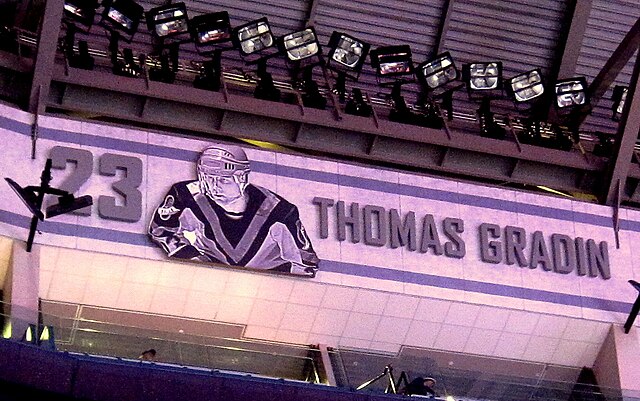
Canucks get: Thomas Gradin – 38.3 PS (197G, 353A for 550P, -38 in 613 GP)
Blackhawks get: 1979 or 1980 2nd Round Pick (Steve Ludzik) – 1.5 PS (34G, 65A for 99P, +2 in 282 GP)
On June 14, 1978 the Canucks traded their a 2nd Round Pick in 1979 or 1980 to Chicago for the NHL rights to centre Thomas Gradin, who the Hawks had drafted in 1976 in the 3rd Round, but who was still playing in Sweden at the time of the trade.
Trading a former 3rd Round Pick for a future 2nd Round Pick seems like it should be a win, right? Well, not in this case.
For the period Gradin joined the team until when he left as a free agent eight years later, he is second among Canucks in goals and first in assists and points. He was essentially Vancouver’s franchise player.
And they got him for a guy whose career-best season, in the ’80s, was 31 points. (And who we know from The Score.)
Obviously Chicago couldn’t have known it at the time, but sometimes it’s not great to trade away a prospect for a future pick.
9. Lumme for a 2nd Round Pick – 46.8 PS
Canucks get: Jyrki Lumme – 48.8 PS (83G, 238A for 321P, + 21 in 579 GP)
Canadiens get: 1991 2nd Round Pick (Craig Darby) – 2 PS (19G, 28A for 47P, -36 in 166 GP)
On March 6, 1990 the Canucks traded a 2nd Round Pick they had acquired from St. Louis to the Habs for 23-year-old defensive prospect Jyrki Lumme. Lumme had broken out this season but it seems the Habs were comfortable with their blueline depth and felt they didn’t need him.
Over the next 9 seasons Lumme would score more points than any other Canucks D by double. To this day he is 4th All Time in scoring among Canucks D. Of course, he also helped Vancouver to the Cup Final in 1994. All that for a 2nd Round Pick.
The Canadiens used their pick on Craig Darby, an American centre. Darby excelled in College and was just about a point-per-game player in the AHL. But he was included in the infamous Kirk Muller trade, after only playing 10 games for the Habs.
8. Bertuzzi and McCabe for Linden – 52.1 PS
Canucks get:
- Todd Bertuzzi – 50 PS (188G, 261A for 449P, +3 in 518 GP)
- Bryan McCabe – 6.4 PS (8G, 25A for 33P, -1 in 95 GP)
- 1998 3rd Round Pick (Jarko Ruutu) – 1.6 PS (23G, 28A for 51P, -20 in 267 GP)
Islanders get Trevor Linden – 5.9 PS (28G, 36A for 64P, -15 in 107 GP)
On February 6, 1998 the Canucks traded pseudo Franchise Player Trevor Linden to the Islanders for winter prospect Todd Bertuzzi, the Islanders’ captain Bryan McCabe and a 3rd Round Pick.
Linden was drafted 2nd overall in 1998 but had never scored more than 80 points in a season and had seen his status as the team’s most important player usurped at least once. But Linden was really traded because Vancouver ownership infamously brought two of the people who beat them in 1994 Finals: Mike Keenan and Mark Messier, the latter of whom assumed Linden’s role as team captain in what has been described as a “hostile takeover”.
Bertuzzi was a 1st Round Pick averaging less than .5 PPG but who was yet to turn 23. Though Captain of the Islanders, McCabe was even younger than Bertuzzi. But, evidently, the Islanders thought they needed veteran leadership.
Linden lasted 107 games in New York and the team didn’t make the playoffs. He was traded to Montreal about 15 months after this trade.
Of course, Bertuzzi blossomed as part of what was, at one point, considered the “Best Line in Hockey” with Markus Naslund (see below) and Brendan Morrison (see above). Some talked about him as the best player in hockey – he finished 3rd in points in ’02 5th in ’03, and led the league in PPG in ’02. This was all prior to the sucker punch of Steve Moore in March 2004. Because of that incident, Bertuzzi was traded to Florida in June 2006 (#5 on this list).
McCabe was not exactly a success in Vancouver – though he scored more than he did on the Island – but he was soon traded in one of the deals that set up the #1 trade on this list, which most Vancouver fans probably view as a win.
The Canucks used their draft pick on future super pest Jarko Ruutu who, though he might not have accumulated a lot of Point Shares, certainly endeared himself to fans.
7. Seven Player Trade – 58.9 PS

Canucks get:
- Geoff Courtnall – 21.5 PS (102G, 144A for 24P, +35 in 292 GP)
- Robert Dirk – 10.9 PS (9G, 18A for 27P, +42 in 217 GP)
- Sergio Momesso – 10.4 PS (68G, 73A for 141P, +24 in 269 GP)
- Cliff Ronning – 27.5 PS (112G, 216A for 328P, +54 in 366 GP)
- 1991 Fifth Round Pick (Brian Loney) – 0.3 PS (2G, 3A for 5P, +2 in 12 GP)
Blues get:
- Garth Butcher – 11.1 PS (11G, 35A for 46P, +3 in 208 GP)
- Dan Quinn – 0.6 PS (4G, 7A for 11P, -5 in 14 GP)
On March 5th, 1991 the Canucks traded 28-year-old Top 4 D Garth Butcher and 25-year-old centre Dan Quinn for a package consisting of four players and a pick. The ’91 Canucks were not good – the third worst team in the league by SRS – and the Blues were gearing up for a Cup run (as they were the 4th best team in the league) but this trade is still nuts.
Butcher was -118 when the Blues traded for him. Sure, he was on a bad team, but he put up .23 PPG and really only offered “sandpaper” to the tune of 200+ PIM every season. (It was a different time.)
Quinn’s best season had come a couple of years before, playing with Lemieux. He was the defacto #1 season for Vancouver this season because Linden had yet to move to centre. Quinn didn’t have a great season: 18G, 31A for 49P, -28 in 64 games. In 1990-91.
To get these two essential players for their Cup run, the Blues gave up
- A 28-year-old former 40-goal scorer (Courtnall)
- A former 3rd Round Pick (Dirk)
- A 25-year-old former 20-goal scorer (Momesso)
- A 25-year-old on his way to scoring 20 goals for the third straight year (Ronning)
- And a 5th Round Pick
Momesso and Ronning (and Courtnall to a lesser extent) were having off years, but still, the sheer number of players given up to get a 2nd line centre and a goon seems out of whack.
The Blues were eliminated in the second round.
Butcher did his job in St. Louis and remained a plus. He was included in the Steve Duchesne trade with Quebec three years later.
Quinn actually did a good job for the Blues in the playfoffs, coming in 4th in team scoring, but he was included in the disastrous Brind’Amour trade in the off season. (Brind’Amour and Quinn for Murray Baron and Ron Sutter. Seriously.)
Courtnall excelled for the Canucks, scoring at roughly the pace he had in his brief time in St. Louis and scoring at least 20 goals in each season in Vancouver except the lock-out shortened one. He also scored the third most goals and points in their Final run in 1994. He went back to St. Louis in free agency in 1995.
Dirk amassed a bunch of PIM until he was traded to Chicago three years later.
Momesso put up a slightly higher PPG in Vancouver than he had in St. Louis. He was traded to the Leafs in the 1995 off-season.
Of course, Ronning became the Canucks 1A centre. Between 1991 and 1996, nobody on the Canucks had more assists than Ronning (by nearly 40). Ronning left in free agency in 1996.
That 5th Round Pick didn’t amount to much, but so what? The Canucks got a pseudo #1 centre, a top 6 winger, a middle 6 winger and a goon out of a #2 centre and a goon.
6. Richard Brodeur for a Pick – 65 PS
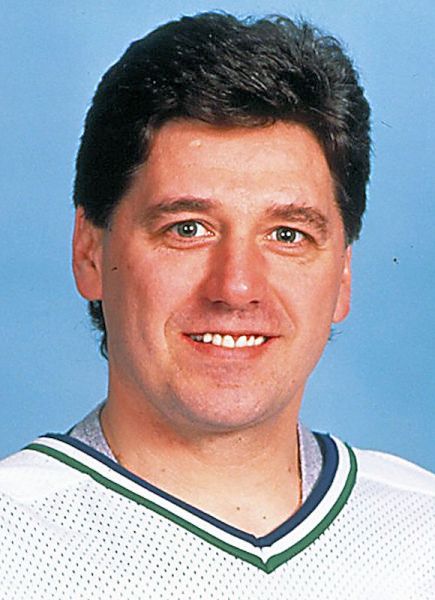
Canucks get:
- Richard Brodeur – 55.7 PS (126-173-62, .872 SV%, 3.88 GAA, 6 SO in 377 GP)
- 1981 Fifth Round Pick (Moe Lemay) – 9.3 PS (70G, 92A for 162P, -25 in 279 GP)
Islanders get: 1981 Fifth Round Pick – 0 PS (0 GP)
On October 6, 1980 the Canucks traded a 5th Round Pick for the Islanders’ 5th Rounder and goaltender Richard Brodeur.
Brodeur was drafted by the Islanders in 1972 but went to the WHA instead, where he was one of the better goalies in a high-scoring league, leading the league in Wins once and Shut-Outs once. When the WHA folded, the Islanders held his rights but the Quebec franchise, which Brodeur played for in the WHA, claimed him in the expansion draft. The Islanders then had to trade for him in order to keep the player they drafted.
But the Islanders, who were at the start of their dynasty, buried Brodeur in the minors and clearly wanted to move on. So this trade happened.
Of course, Brodeur became the Canucks’ starter. He led the Canucks to the Final against the Islanders in 1982, leading the playoffs in Save Percentage, shots and saves. He was also a Top 5 goalie that season and a Top 10 goalie in two other seasons.
Vancouver used the Islanders’ pick on Moe Lemay, who once scored 20 goals.
The Islanders used the Canucks’ pick on a guy that never played in the NHL.
5. 2004 Pick Swap – 71.7* PS
Canucks get: 2004 3rd Round Pick (Alex Edler) – 71.7 PS (99G, 302A for 401P, -28 in 873 GP)
Stars get: 2005 3rd Round Pick (Rich Clune) – 0 PS (0 GP)
At the 2004 draft, the Canucks traded their 3rd Rounder for the Stars’ 3rd Rounder the next year, seemingly an inconsequential move.
But, with the pick, the Canucks were able to draft Alex Edler 91st overall. Edler is currently 8th in Games Played in his draft and 10th in Point Shares. Notably, he is still on the Canucks as we write this. He was also the #2/#3 D on the team when the Canucks went to the Cup Final in 2011. (He is 2nd on the team in total ice time among skaters, but 3rd in ATOI.)
The next year the Stars drafted 71st overall and they drafted Clune. Clune played in the ECHL and AHL for Dallas’ affiliates but he was traded to the Kings before he ever played an NHL game. He has played less than 140 NHL games and is currently in the AHL.
4. Luongo for Bertuzzi – 77.5 PS
Canucks get:
- Lukas Krajicek – 5.9 PS (5G, 22A for 27P, -7 in 117 GP)
- Roberto Luongo – 89.3 PS (252-137-50, .919 SV%, 2.36 GAA, 38 SO in 448 GP)
- 2006 Sixth Round Pick (Sergei Shirokov) – (0.1) PS (1G, 0A for 1P, -3 in 8 GP)
Panthers get:
- Bryan Allen – 14.2 PS (14G, 53A for 67P, +1 in 284 GP)
- Alex Auld – 3 PS (7-13-5, .888 SV%, 3.35 GAA, 1 SO in 27 GP)
- Todd Bertuzzi – 0.4 PS (1G, 6A for 7P, -4 in 7 GP)
- Unexercised conditional 2007 Sixth Round Pick
The Canucks had to trade Todd Bertuzzi (see above) so they made the best of it and, on June 23, 2006 they traded him and two other players for the franchise goaltender of the Florida Panthers, Roberto Luongo.
Honestly, it’s hard to know what Florida was thinking. Most people playing attention to the league knew how good Luongo was, even if Florida wasn’t. He was facing more rubber than just about any other goaltender and, by Point Shares, he was the Most Valuable Goalie in the league for the three seasons prior to the trade.
So even trading Luongo for three players and a conditional pick seems nuts, let alone Luongo plus two other assets.
Bertuzzi was still putting up decent offensive numbers, but he was no longer a candidate for Best Player in the World. (Moreover, he had legal proceedings hanging over him.) Allen was a depth defenseman and Auld was the backup goalie.
What was Florida thinking?
It went even worse than you might have predicted at the time:
Allen was fine as the #2 D on the Panthers until he missed a season due to a knee injury. When he came back he had less of a role and the Panthers eventually traded him to Carolina in 2011.
Bertuzzi got off to a great start in Florida, scoring 7 points in 7 games. But he had to have back surgery. The Panthers traded him to Detroit while he was recovering.
Auld did not steal the starting job from 41-year-old Ed Belfour and he left in free agency that summer.
The conditional pick conditions never came into play and so the Panthers didn’t get it.
Meanwhile, Roberto Luongo continued to be one of the best goalies in the league, finishing Top 4 in Vezina voting three times, winning the Jennings in 2011 and finishing as the runner up to the Hart in his first season as a Canuck. In 2011, he led the Canucks to the Stanley Cup Final, leading the playoffs in Shutouts. Luongo is the franchise leader in Wins and Shutouts, among other things.
Krajicek was a depth player for a season and then couldn’t stay in the lineup. He was traded two years later.
The 6th round pick didn’t turn into much.
Who cares? The Canucks traded a problem, a depth D and a backup goalie for the best goalie in franchise history!
3. Naslund for Stojanov – 87.7 PS
Canucks get: Markus Naslund – 87.1 PS (346G, 410A for 756P, +2 in 884 GP)
Penguins get: Alex Stojanov – (0.6) PS (2G, 4A for 6P, +2 in 45 GP)
On March 20, 1996, the Pittsburgh Penguins traded 22-year-old prospect Markus Naslund, during his breakout year, for higher pedigree prospect Alex Stojanov, who had yet to break out. (Stojanov and Naslund were taken 7th and 16th in the 1991 Entry Draft respectively.)
If there was one trade Canucks fans would likely vote as “Best Single Trade in History”, it’s probably this one. It’s infamous.
Naslund had scored at about an 0.8 PPG pace that season but the Penguins, who were one of the best teams in the league, were clearly thinking about the future and wanted the better pedigree prospect, even though Stojanov was struggling in the AHL.
Everyone knows what happened: Naslund succeeded Bure as the Canucks’ franchise player. He won the Pearson in 2002-03 and finished as the runner up in Hart voting. He also finished Top 5 in Hart voting another two seasons. He held the franchise record in goals scored until January 2016 and he was the franchise leader in points until 2013.
Stojanov couldn’t stay in the NHL and eventually struggled to score at his previous mediocre pace in the AHL (and later the IHL). He played a total of 107 regular season NHL games.
Oops.
2. McLean for Sundstrom – 91.3 PS
Canucks get:
- Greg Adams – 30 PS (179G, 190A for 369, -19 in 489 GP)
- Kirk McLean – 7.27 PS (211-228-62, .887 SV%, 3.28 GAA, 20 SO in 516 GP)
- Devils’ option to swap 1988 Second Round Picks (Leif Rohlin) – 5.7 PS (8G, 24A for 32P, +4 in 96 GP)
Devils get:
- Patrik Sundstrom – 17.2 PS (86G, 160A for 246AP, +23 in 305 GP)
- Devils’ option to swap 1988 Second Round Picks (Jeff Christian) – (0.1) PS (0P in 2 GP)
- 1988 Fourth Round Pick (Matt Ruchty) – 0 PS (0 GP)
On September 15, 1987 the Canucks traded star Patrik Sundstrom, a pick and a pick swap for emerging star Greg Adams and goalie prospect Kirk McLean.
Sundstrom was the offensive star of the Canucks, leading all Canucks scorers over the first five seasons of his career. He scored 91 points in 1983-84. The Canucks also included a future 4th Rounder and the Devils’ right to swap 2nds in the same draft.
Adams was younger than Sunstrom but had already scored 36 goals in 1985-86. McLean was one of many goalies in the Devils system but the reason the Devils wanted to get rid of him was that he had two arthroscopic surgeries in 1987.
But the Canucks were right to bet they were winning the deal.
Sundstrom had a fine five more years with the Devils, including his infamous 8 point playoff game. But the Devils lost in the Conference Finals that season and Sundstrom only had 12 points in the other 17 games. He returned to Sweden in 1992.
The Devils swapped 2nd rounders and ended up with Jeff Christian who played a total of 18 NHL games. The 4th Rounder never made the NHL.
The Canucks got more out of the Devils’ 2nd as he played 96 games.
But the real steals were the current players.
Adams played on the Canucks for most of 8 seasons, scoring the third most points of any Vancouver player during that time. And he participated in Vancouver’s run to the Final in 1994.
Far more importantly, McLean immediately became the Canucks starter. In his second season with the team he led the league in minutes. In 1991-92 he finished 2nd in Vezina voting and 4th in Hart voting, making the 2nd All Star team. And, in 1994, he faced the most shots, made the most saved and led the playoffs in Shutouts and minutes as the Canucks reached the Finals for the second time in franchise history.
1. The Capstone to Brian Burke’s Dealmaking at the 1999 Draft – 110.5 PS
It’s a legendary story, all the machinations GM Brian Burke went to in order to land both Sedin twins. But if we split the individual transactions apart, one stands out, the final deal of the process, which saw Vancouver trade the #1 overall draft pick to the Thrashers for #2 and a conditional 3rd round pick in 2000:
Canucks get:
- 1999 First Round Pick (Daniel Sedin) – 123.1 PS (393G, 648A for 1041P, +147 in 1306 GP)
- 2000 3rd Round Pick (Max Birbraer) – 0 PS
Thrashers get: 1999 First Round Pick (Patrik Stefan) – 12.6 PS (59G, 118A for 177P, -41 in 414 GP)
There are only a few times in history in which the #2 overall draft choice has been this much more valuable than the #1 choice. (Daigle over Pronger springs to mind.) Hell, there are relatively few times the #1 pick was over 100 PS more valuable than the #2.
On June 25, 1999, on the eve of the draft, the Canucks traded away the #1 pick to move down a spot so they could select both Sedins in order.
It’s product of a poor draft and a unique situation. And, of course, it’s impossible to talk about Daniel without talking about Henrik. There is a possible world in which two different franchises drafted the twins and their careers turned out differently.
Of course, the Canucks had the #3 pick already so once they got the #1 they could guarantee at least one of the brothers. Burke’s version is that he “didn’t want to go up there (to the podium) twice” but it’s likely he thought the Thrashers wanted Stefan and he didn’t want them changing their mind once he took Daniel.
Daniel Sedin, of course, went on to win the Art Ross in 2011 – a Canucks single-season scoring record – as well as the Ted Lindsay (and he is our choice for the Hart in 2011) and he and his brother led the Canucks to the Stanley Cup final that year. He made one 1st Team and one 2nd All Star Team and he is the Canucks’ career leader in Goals.
The conditional 3rd round pick was later sent to the Devils as part of a role player/pick swap in January 2000.
Patrik Stefan is now known as one of the great busts in NHL draft history. After six ineffectual years in Atlanta – where he once posted a career high of 40 points – he was traded to Dallas, where the ignominy continued:
The chaos that led up to this trade, which is the real story, didn’t work out as well for the Canucks, when taken out of context. The Canucks acquired the #1 pick from the Lightning in a trade that helped neither team in the moment:
Canucks get: 1999 First Round Pick – 0 PS for the Canucks, obviously
Lightning get:
- 1999 First Round Pick (Pavel Brendl) – 0 PS for the Lightning because the pick was traded to the Rangers
- 1999 Third Round Pick (Brett Scheffelmaier) – 0 PS for the Lightning, re-entered the draft
- 1999 Third Round Pick (Jimmie Olvestad) – 0.1 PS (3G, 14A for 17P, +1 in 111 GP)
(Weirdly some sources list this trade as occurring the day after the main trade which is impossible.)
One third rounder was the Canucks’, one came over in the Geoff Sanderson trade, but that first round pick (#4 overall) was supposedly a secret to Burke’s fellow GMs, acquired earlier in the week – but, crucially, not registered until the day of the trade. It was acquired for Bryan McCabe:
Canucks get: 1999 First Round Pick – 0 PS for the Canucks obviously
Blackhawks get:
- Bryan McCabe – 3.8 PS (6G, 19A for 25P, -8 in 79 GP)
- 2000 or 2001 First Round Pick (Pavel Vorobiev) – 2.1 PS (10G, 15A for 25P, -1 in 57 GP)
The sequence is mind-boggling and the main reason Burke has the reputation he does.
The Best Trade(s) in Canucks History.
Methodology:
This ranking relies on Hockey Reference’s Point Shares metric. That metric is flawed in many ways. Here is a brief list:
- Point Shares are an an approximation of individual value based upon team goal differential, as such they are flawed in the same way Plus/Minus is flawed. But they have been calculated back before goal individual goal differentials were tracked by the league, so they are even more flawed prior to the existence of this date. You can read about how they are calculated here. (Also, Time on Ice wasn’t tracked until the late 1990s, which further skews older Point Shares.)
- Point Shares weigh goals more than assists. This isn’t necessarily an actual problem, but explains why players with way more assists than goals – such as Doug Gilmour – have fewer Point Shares than you might assume.
- Point Shares are a regular season stat so this ranking does not take into account playoff performance, which is a huge problem for a ranking like this, especially prior to expansion when the Leafs regularly won Cups.
- Modern players earn more career Point Shares than older players because the seasons are longer now but also because more team points are awarded than ever before.
This ranking has additional issues by relying on Point Shares as the guiding metric:
- Totaling Point Shares completely ignores context. The team getting back fewer Point Shares in terms of regular season player performance might be better off is some way not captured by Point Shares:
- Money in the trade allows the team to sign or pay another player;
- Roster/Salary Cap Space allows the team to sign or pay another player;
- Intangible chemistry/culture issues could be addressed by the trade;
- In the free agency era, a player in the trade may have been planning to leave for free agency after the trade, anyway.
- Totaling Point Shares ignores what the teams did next. Specifically, if a team involved in the trade trades away or waives one or more of the players in the trade immediately, the trade may look worse for them than it actually was in reality (and better for the other team). For example, using Point Shares to calculate the impact of the Bruins-Leafs Phil Kessel trade makes it look like less of a loss for the Leafs because the Bruins traded away the players they got back before they got back before they could accumulate more Point Shares. So this is a first degree evaluation. (If you would like us to make a list with 2nd or 3rd degree or greater evaluations, let us know in the comments.)
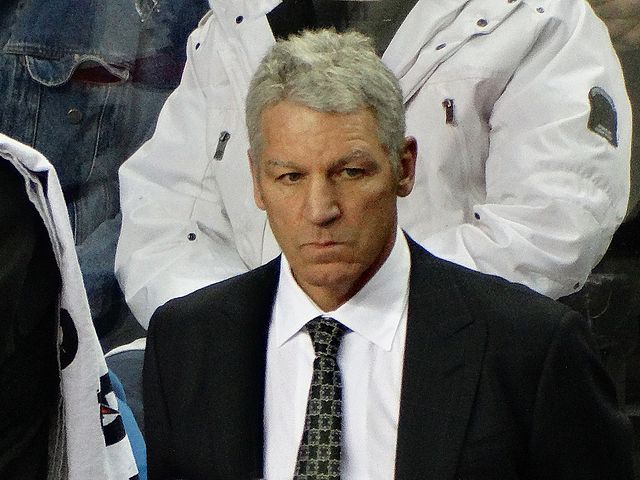
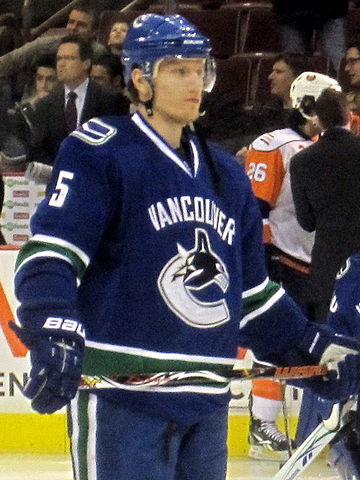
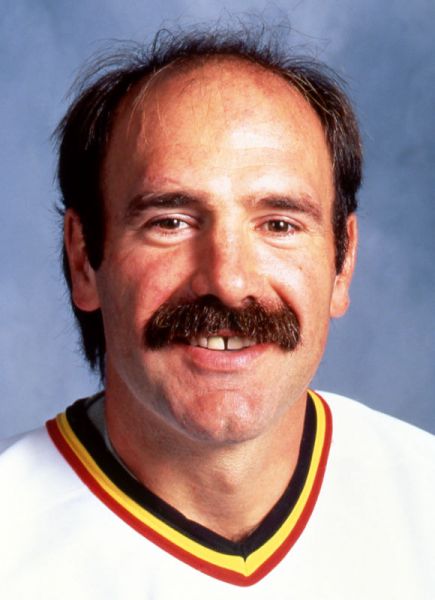
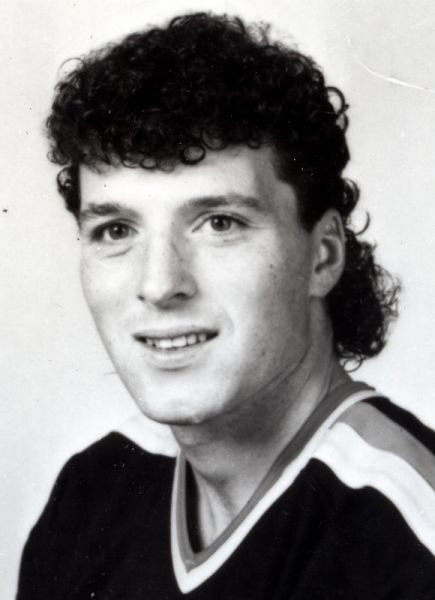
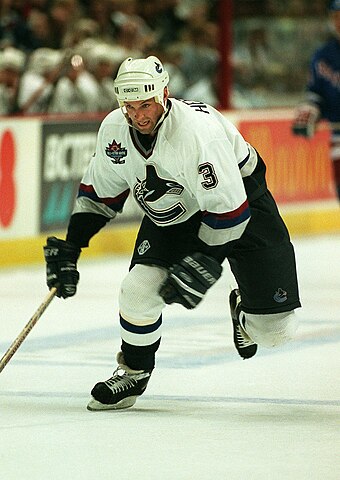
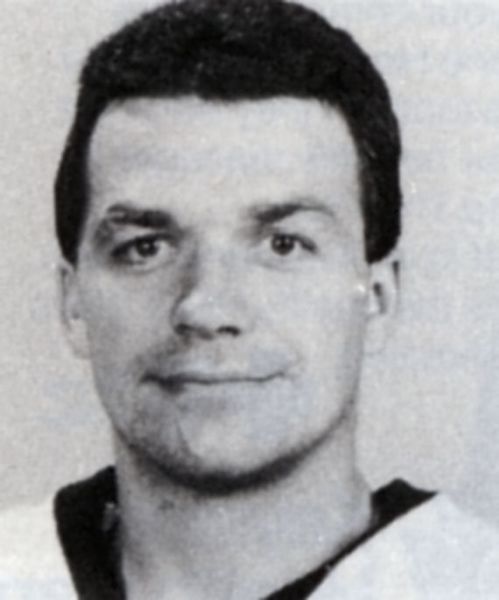

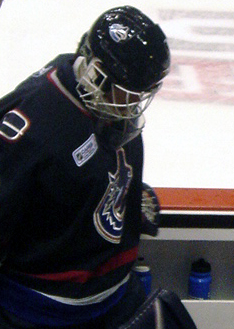
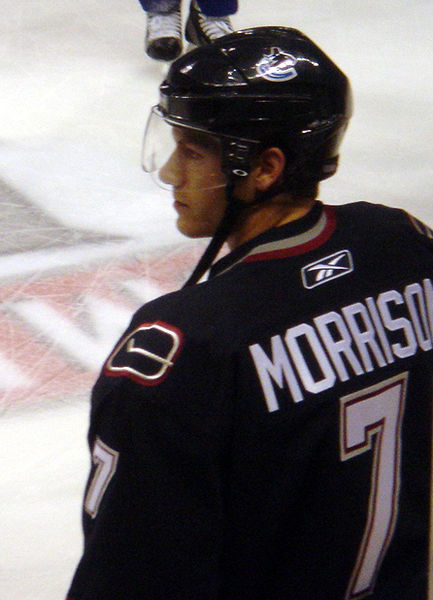




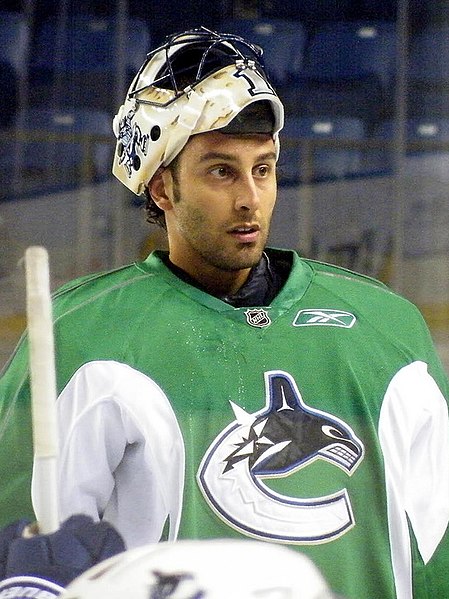

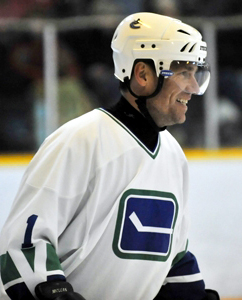
2 thoughts on “The Top 21 Trades in Vancouver Canucks History”